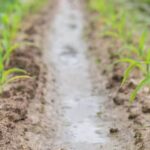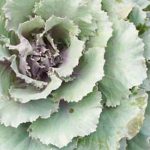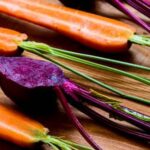Are you interested in growing your own fruits and vegetables but don’t have a big garden? Vegetable and fruit container gardening might be the perfect solution for you. This method of gardening allows you to grow a variety of produce in small, manageable containers, making it ideal for urban dwellers or those with limited outdoor space.
Container gardening offers numerous benefits, including the ability to control the soil and growing conditions, as well as the convenience of being able to move your plants around to optimize sunlight exposure. In this article, we will explore the concept of vegetable and fruit container gardening, offering tips and advice on how to successfully cultivate your own produce in containers.
From choosing the right containers and selecting the best vegetables and fruits to discussing soil, fertilizers, watering, sunlight, maintenance, pest control, harvesting, and pruning techniques – we will cover all aspects of container gardening. Additionally, we will explore space-saving ideas for container gardening and highlight the benefits of growing your own organic produce in containers.
Whether you’re a seasoned gardener or a novice looking for inspiration, this article aims to provide valuable insights into the world of vegetable and fruit container gardening.
Choosing the Right Containers
When it comes to vegetable and fruit container gardening, choosing the right containers is crucial for the success of your plants. There are various types of containers that are suitable for growing vegetables and fruits, each with its own advantages and considerations. Here are some options to consider:
1. Plastic Pots: Lightweight and affordable, plastic pots are a popular choice for container gardening. They come in a variety of sizes and colors, making them versatile for different types of vegetables and fruits.
2. Fabric Grow Bags: These breathable containers provide excellent drainage and air circulation for the plants’ roots. They are also space-saving and can be folded up when not in use.
3. Hanging Baskets: Perfect for growing trailing vegetables and fruits such as cherry tomatoes, strawberries, and vine plants like cucumbers or beans. They can be hung from ceilings or hooks to save on floor space.
4. Wooden Crates or Boxes: For a rustic look, wooden crates or boxes add charm to your container garden while providing ample space for root growth.
5. Self-Watering Containers: These containers have a built-in reservoir that allows the plants to draw water as needed, reducing the frequency of watering required.
Choosing the right containers depends on factors such as the type of vegetable or fruit you want to grow, the available space, aesthetics, and practicality. It’s essential to consider these factors when selecting the containers for your vegetable and fruit container gardening project.
In addition to these options, vertical gardens using repurposed materials such as old pallets or gutters can also be an innovative approach to space-saving container gardening. Vertical gardens not only maximize limited space but also create a visually appealing display of your favorite vegetables and fruits. Remember that no matter which type of container you choose, proper drainage is crucial to prevent waterlogged soil that can harm plant roots.
Selecting the Best Vegetables and Fruits
When it comes to vegetable and fruit container gardening, choosing the right plants is crucial for success. Not all vegetables and fruits thrive in containers, so it’s important to select the ones that are well-suited for this type of gardening. Here are some ideal choices for container gardening:
- Tomatoes: Tomatoes are one of the most popular choices for container gardening. There are many varieties available that are specifically bred for growing in containers, making them a great option for small spaces.
- Peppers: Both sweet peppers and hot peppers do well in containers. They don’t require as much space as other vegetables and can be grown successfully on patios or balconies.
- Herbs: Many herbs, such as basil, parsley, and thyme, thrive in containers. They not only add flavor to your dishes but also serve as beautiful ornamental plants.
- Strawberries: Strawberries can be grown in hanging baskets or shallow pots, making them an excellent choice for container gardening. They also produce delicious fruits throughout the season.
When selecting vegetables and fruits for your container garden, it’s important to consider their size and space requirements. Some plants simply need more room to grow than others. Additionally, you should take into account the climate conditions in your area and choose plants that are suitable for your specific growing zone.
In addition to choosing the right plants for your vegetable and fruit container garden, it’s also important to consider how much time and effort you’re willing to invest in maintenance. Some plants require more care than others, so it’s essential to pick varieties that align with your gardening goals and capabilities. By selecting the best vegetables and fruits for your container garden, you can ensure a bountiful harvest while enjoying the benefits of homegrown produce.
Soil and Fertilizers
When it comes to vegetable and fruit container gardening, choosing the right soil and fertilizers is essential to ensure healthy growth and a bountiful harvest. The quality of the soil directly impacts the health and productivity of your plants, while fertilizers provide essential nutrients for their growth. Here are some tips for selecting the right soil and fertilizers for your container garden.
Choosing the Right Soil
The key to successful vegetable and fruit container gardening lies in using a high-quality potting mix specifically designed for containers. Look for a lightweight mix that provides good drainage and aeration, as this will prevent waterlogging and allow the roots to access oxygen. Avoid using garden soil, as it tends to be too heavy and may contain pests or diseases that could harm your plants.
Considering Fertilizers
In addition to choosing the right soil, it’s important to provide your container garden with adequate nutrients for healthy growth. Consider using organic fertilizers specially formulated for container gardening, as they release nutrients slowly over time without harming beneficial organisms in the soil. Liquid fertilizers can also be used to supplement the nutrition needs of your plants, especially during periods of rapid growth or fruit production.
Ensuring Healthy Growth
By selecting the right soil and fertilizers for your vegetable and fruit container gardening, you can ensure that your plants have everything they need for healthy growth. Remember to regularly check the nutrient levels in the soil and adjust your fertilization routine accordingly. With the proper care and attention to soil quality, you can look forward to a thriving container garden full of delicious fruits and vegetables.
Watering and Sunlight
When it comes to vegetable and fruit container gardening, ensuring that your plants receive the right amount of water and sunlight is crucial for their healthy growth. In this section, we will discuss the essential care requirements for watering and providing enough sunlight for the plants.
Watering Tips
One of the most important aspects of vegetable and fruit container gardening is watering. Containers can dry out faster than traditional garden beds, so it’s essential to monitor the moisture levels regularly. Consider investing in a moisture meter to accurately gauge when your plants need watering.
Aim to keep the soil consistently moist but not waterlogged, as overwatering can lead to root rot and other issues. Water in the early morning or late evening to minimize evaporation and give the plants a chance to absorb the moisture.
Sunlight Requirements
Just like any other plant, fruits and vegetables grown in containers require sufficient sunlight for photosynthesis and growth. Most edible plants need at least 6-8 hours of direct sunlight each day, so it’s essential to place your containers in a location that receives adequate sunlight. Keep in mind that different types of vegetables and fruits may have varying sunlight requirements, so be sure to research the specific needs of each plant you intend to grow.
Space-Saving Techniques
For those with limited space, consider utilizing vertical gardening techniques or using hanging baskets for your vegetable and fruit container gardening. Vertical gardens make efficient use of space by allowing you to grow upwards instead of outwards. Additionally, placing containers on wheeled platforms or utilizing tiered shelving can maximize sunlight exposure for your plants.
By following these watering and sunlight tips, you can ensure that your vegetable and fruit container garden thrives and produces a bountiful harvest of fresh, organic produce right at home.
Maintenance and Pest Control
Maintaining a vegetable and fruit container garden is essential for ensuring the health and productivity of your plants. Regular maintenance tasks include watering, fertilizing, pruning, and keeping pests at bay. One of the benefits of container gardening is that it allows you to easily manage and control the environment in which your plants grow.
To maintain your container garden, it’s important to regularly check the moisture levels of the soil and water the plants accordingly. The type of soil used also plays a crucial role in maintaining healthy plants. Using high-quality potting mix specifically designed for container gardening can provide the necessary nutrients and support for plant growth.
Pests can pose a threat to your vegetable and fruit container garden, so implementing an effective pest control strategy is vital. Common pests that may affect container-grown produce include aphids, spider mites, and whiteflies. To keep these pests at bay, consider using natural remedies such as neem oil or insecticidal soap. Additionally, regularly inspecting your plants for any signs of pest infestation can help prevent any serious damage.
| Maintenance Tasks | Pest Control Strategies |
|---|---|
| Watering | Use of natural remedies like neem oil |
| Fertilizing | Regular inspection for signs of pest infestation |
| Pruning | Maintaining overall plant health to prevent infestation |
Harvesting and Pruning
Harvesting fruits and vegetables from your container garden is a satisfying experience that allows you to enjoy the literal fruits of your labor. When it comes to harvesting, it’s important to do so at the right time to ensure the best flavor and quality.
For example, tomatoes should be harvested when they are fully colored but still firm, while strawberries should be picked when they are fully red. It’s essential to research the specific harvesting times for each type of fruit or vegetable in order to get the best results.
Pruning is also a crucial aspect of maintaining a healthy and productive container garden. Regular pruning can help control the size and shape of plants, improve air circulation, and promote better fruit production. For instance, pruning tomato plants involves removing suckers (the small shoots that grow between the main stem and branches) to encourage bigger and healthier fruits.
An important tip for both harvesting and pruning in vegetable and fruit container gardening is to always use clean, sharp tools to prevent damage or disease spread. By mastering these techniques, you can ensure a bountiful harvest from your container garden.
| Harvesting Fruits | Proper Pruning |
|---|---|
| Harvest at optimal ripeness for best flavor | Regular pruning controls size and promotes fruit production |
| Use clean, sharp tools for harvesting | Remove suckers from tomato plants for better fruit growth |
Success Stories and Inspiration
In conclusion, vegetable and fruit container gardening offers a myriad of benefits, from providing fresh produce in limited spaces to the joy of watching your own fruits and vegetables thrive. The success stories shared in this article demonstrate that anyone with the determination and knowledge can embark on their container gardening journey and achieve impressive results.
The space-saving aspect of container gardening is particularly appealing for urban dwellers or those with limited outdoor space. By using various types of containers, such as pots, hanging baskets, or window boxes, individuals can cultivate a variety of vegetables and fruits in balconies, patios, or even small indoor areas. This accessibility to homegrown produce not only promotes sustainability but also supports a healthy lifestyle.
Furthermore, the ability to grow organic fruits and vegetables using natural methods in containers is another significant advantage. With the right soil, fertilizers, and pest control techniques, individuals can cultivate their own organic produce right at home.
Not only does this contribute to reducing one’s carbon footprint, but it also ensures that the harvested fruits and vegetables are free from harmful chemicals commonly found in store-bought products. Overall, the stories shared here serve as an inspiration for readers to consider starting their own vegetable and fruit container gardening journey – a fulfilling and rewarding endeavor that enriches both mind and body.
Frequently Asked Questions
What Fruits and Vegetables Grow Well in Containers?
Many fruits and vegetables grow well in containers, including tomatoes, peppers, lettuce, strawberries, blueberries, and herbs like basil and mint. Container-friendly fruits and veggies thrive when given proper sunlight, watering, and soil.
What Vegetables Grow Well Together in a Container?
Some vegetables that grow well together in a container include carrots, radishes, and lettuce. These vegetables have different root depths and growth habits that complement each other when planted in the same container. This allows for efficient use of space while promoting healthy growth.
Can You Mix Fruit and Vegetables in a Garden?
It is possible to mix fruit and vegetables in a garden as long as their individual needs for sunlight, water, and soil are met. However, it’s important to consider the spacing requirements of each plant to ensure they have enough room to grow without competing with one another for resources.

If you’re looking to get into vegetable gardening, or are just looking for some tips on how to make your current garden better, then you’ve come to the right place! My name is Ethel and I have been gardening for years. In this blog, I’m going to share with you some of my best tips on how to create a successful vegetable garden.





